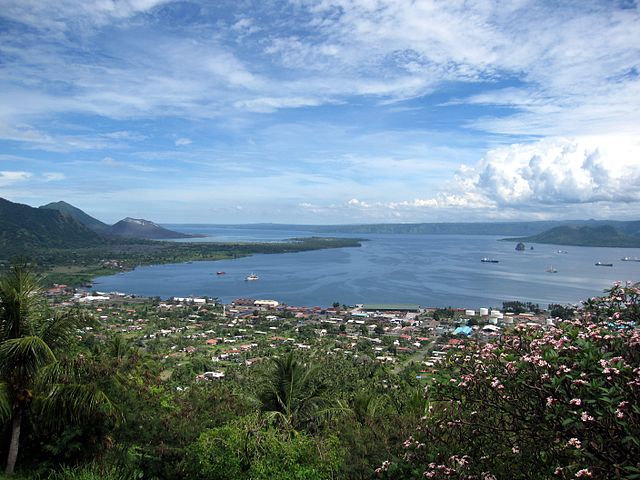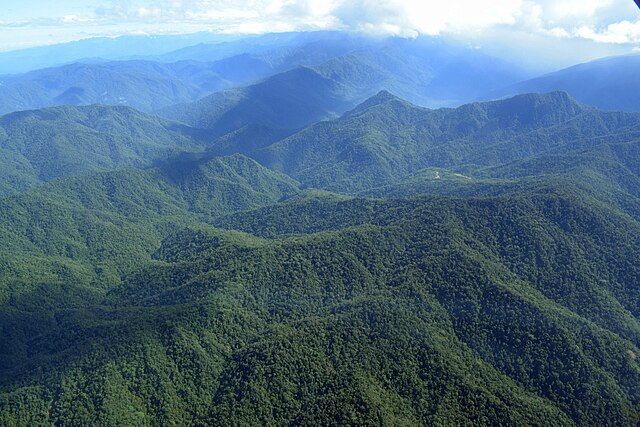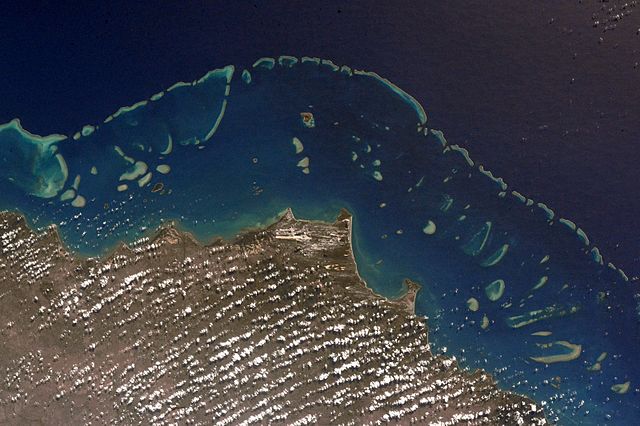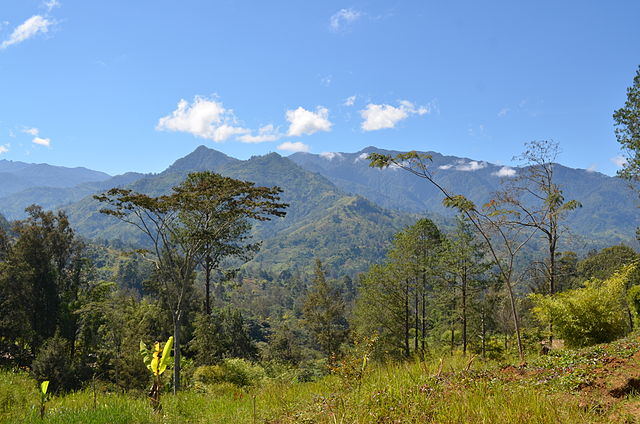What is the Best Time to Visit Papua New Guinea?
The best time to visit Papua New Guinea is from May to October. During these months, the weather is dry and pleasant, which makes it ideal for outdoor activities and sightseeing. Additionally, many of the island’s cultural festivals occur during this period. It is advisable to avoid visiting between November and April due to the hot and humid climate.
What I observe in Papua New Guinea is that it has two main seasons: the wet season and the even wetter season. The best time to visit is during the “wet season,” which runs from April to October. Although it can still rain, it’s drier compared to other times of the year.
From December to March, there is always a high chance of heavy rain. Many tour operators, including those for the Kokoda Track, don’t offer tours during these months.
Even after rain, the weather here is hot year-round, especially in Port Moseby and coastal areas, where the temperatures average around 28° C. Humidity is also high in PNG. While one of my friends once called it “cold” at 20° C, the Highlands can be cooler, particularly at night. Apart from the best time to visit Papua New Guinea, we have given other important information you need to travel before going to PNG. We have also written another article about Things To Do in Papua New Guinea.
Also check out: Things To Do in Papua New Guinea
Other Important Information You Need To Know Before Travelling to PNG
Is visiting Papua New Guinea safe?
Papua New Guinea often gets a bad reputation as a risky place to travel. However, based on my personal experience of living there for four years, I never encountered any safety issues. Still, I am aware of others who have gone through such things.
Before COVID-19, the Australian Government released an advisory for travelers to “Exercise a high degree of caution” and suggested reconsidering travel to the Porgera and Tari townships. Also, the U.S. Government’s travel advice is “Level 2: Exercise increased caution.”
If you’re not used to traveling in places with limited tourist infrastructure, I recommend joining an organized tour or going with a group. One more thing you can do is hire a tour guide to handle logistics. With some common sense and safety precautions, you can definitely have a safe trip and enjoy the warm hospitality of the Papua New Guineans.
These are some safety tips that will help you:
In major cities, you should avoid walking around at night, especially for women alone.
Don’t wear flashy jewelry or carry expensive camera gear.
Always ask locals if an area is safe to visit. They will tell you the reality.
Tribal fighting is rare and usually doesn’t affect tourists, but stay informed about the local situation and avoid areas where conflicts are reported.
When follow these tips, you can safely explore and appreciate the beauty and culture of Papua New Guinea.
What health precautions are necessary before visiting Papua New Guinea?
Before you head to Papua New Guinea, it’s important to take a few health precautions. First of all, see a travel doctor for advice on necessary vaccinations and medications. They can provide guidance specific to your trip, unlike a regular doctor.
Since malaria is present in some parts of PNG, ask your doctor if you need malaria medication and which one is right for you. In general, to avoid mosquito bites, you must wear long sleeves, use insect repellent, and sleep under mosquito nets, which hotels and lodges often provide.
Make sure you have travel insurance, such as the flexible options from World Nomads. Also, pack a well-stocked first-aid kit with essentials like pain relievers (e.g., Nurofen or Ibuprofen), Pepto-Bismol for stomach issues, Imodium, antiseptic cream, any prescribed antibiotics, and Band-Aids. Please keep in mind that, healthcare outside of Port Moresby is limited. So, having these basics will help you stay healthy during your trip. Also, make sure you check what is the best time to visit Papua New Guinea.

Will I require a visa to visit Papua New Guinea?
Yes, you need a visa to visit Papua New Guinea, unless you’re from a country that can get a visa on arrival. Some countries can get a 30 to 60-day tourist visa upon arrival, but others need to arrange their visa before traveling. For example, if you’re from India, you will need to get a visa before you travel. Check with your nearest PNG embassy or consulate for the specific visa requirements.
Also check out: Things To Do in Papua New Guinea
Is traveling to Papua New Guinea costly?
Traveling around Papua New Guinea can be tricky due to limited infrastructure. Tourism is still developing, so if you’re not used to traveling in places with not many tourist services, it would be better to organize your trip through a licensed tour operator. The reason behind this is that they can handle your flights, transport, and accommodation, and ensure your safety.
Apart from that, a tour guide is also helpful because they can explain local costumes and help you avoid doing anything taboo. Even the Papua New Guinea Tourism Promotion Authority lists many tour operators on its website. While it’s possible to travel independently in PNG, I would recommend doing air travel because it’s the easiest way to get around due to limited road infrastructure. Domestic airlines like Air Niugini and PNG Air, as well as charter companies like MAF and TropicAir, can help you in this regard.
While car rentals are available in major cities, keep in mind that most cities aren’t connected by road. For example, there’s no road between Port Moresby and Lae or Goroka). This means that road trips across the country are not easy.
So, if you rent a car, choose a 4WD. The roads can be tough, with frequent landslips and roadblocks. This vehicle will handle these conditions better. In case of an accident or if you hit something (like a pig), don’t stop at the scene. Instead, drive to the nearest police station and report the incident there. Stopping at the could lead to a violent confrontation.
In cities, public motor vehicles (PMVs) and taxis are affordable and commonly used for transportation. PMVs are usually min-buses but can also be flat-tray trucks or even tractors, especially outside the cities. PMVs work in all major cities and towns and also travel along the Highlands Highway, connecting Lae and Highlands region. However, because of the limited road network, you can only travel so far by motor vehicle in Papua New Guinea.
Yes, Papua New Guinea can be quite expensive. When I visited, the hotel rates were so high. It averages around $150 per night, and the limited number of accommodations coupled with underdeveloped infrastructure contribute to high costs. Travelers should plan their budgets accordingly.
What should I pack when visiting PNG?
Your packing list for Papua New Guinea should reflect your planned activities. If you’re planning to snorkel or dive, bring appropriate swimwear and gear. For hiking or exploring, pack sturdy shoes and comfortable clothing. It’s important to dress modestly, especially in rural areas, where women should cover their shoulders and knees. You should avoid tank tops and bikinis when outside of resorts as they’re not even allowed in some places.
Also check out: Things To Do in Papua New Guinea
How can you get around Papua New Guinea?
Traveling around Papua New Guinea can be tricky due to limited infrastructure. Tourism is still developing, so if you’re not used to traveling in places with not many tourist services, it would be better to organize your trip through a licensed tour operator. The reason behind this is that they can handle your flights, transport, and accommodation, and ensure your safety.
Apart from that, a tour guide is also helpful because they can explain local costumes and help you avoid doing anything taboo. Even the Papua New Guinea Tourism Promotion Authority lists many tour operators on its website. While it’s possible to travel independently in PNG, I would recommend doing air travel because it’s the easiest way to get around due to limited road infrastructure. Domestic airlines like Air Niugini and PNG Air, as well as charter companies like MAF and TropicAir, can help you in this regard.
While car rentals are available in major cities, keep in mind that most cities aren’t connected by road. For example, there’s no road between Port Moresby and Lae or Goroka). This means that road trips across the country are not easy.
So, if you rent a car, choose a 4WD. The roads can be tough, with frequent landslips and roadblocks. This vehicle will handle these conditions better. In case of an accident or if you hit something (like a pig), don’t stop at the scene. Instead, drive to the nearest police station and report the incident there. Stopping at the could lead to a violent confrontation.
In cities, public motor vehicles (PMVs) and taxis are affordable and commonly used for transportation. PMVs are usually min-buses but can also be flat-tray trucks or even tractors, especially outside the cities. PMVs work in all major cities and towns and also travel along the Highlands Highway, connecting Lae and Highlands region. However, because of the limited road network, you can only travel so far by motor vehicle in Papua New Guinea.
We hope you like this article about the Best time to Visit Papua New Guinea. We tired to cover more points in this article, feel free to ask more in comments.
Also check out: Things To Do in Papua New Guinea



